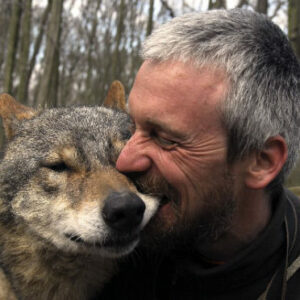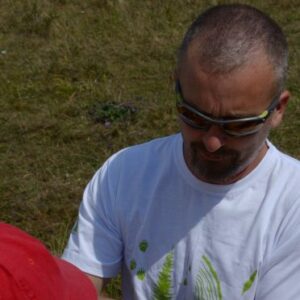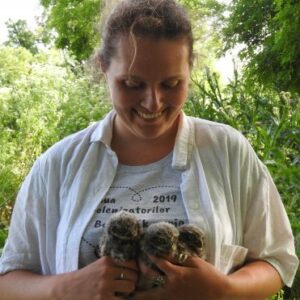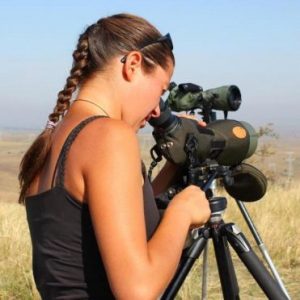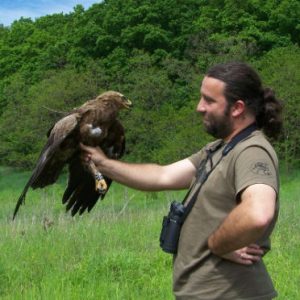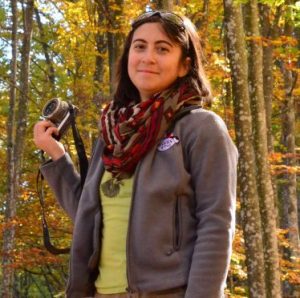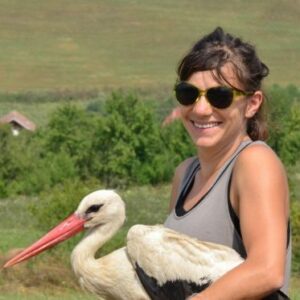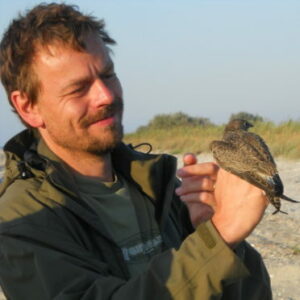
In the Western Ukraine, the Lesser Spotted Eagle has always been a common bird of prey. Moreover, it is not considered a rare species in Ukrainian Carpathians as a whole (Strautman1954, Zubarovskiy 1977 et al.). There are numerous, though segmentary records of the Lesser Spotted Eagle in the literature, which confirm its common status in the region. However, the population numbers of this species has never been a topic of research before. According to V. Bondar (2003), the population of this species in Zakarpatskiy region as a whole is about 40 nesting pairs. It was estimated by B. Godoivanets (oral report) that the population number in Ukrainian Carpathians is about 50 pairs. There are no other summarizing publications on the quantity of the Lesser Spotted Eagle in Ukrainian Carpathians.
Therefore, the project of the Ukrainian Society for the Protection of Birds presents an interesting opportunity to do a survey and estimate the number of the Lesser Spotted Eagle, as well as other birds of prey in Ukrainian Carpathians through the financial support of the WWF Austria.
Team
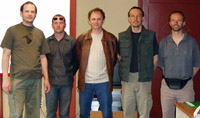
- Vitaliy Vetrov
- Sergei Domashevskyy
- Yuriy Milobog
- Maksym Gavrilyuk
- Vladimir. Strygunov
- Elena Vetrova
- Vitaliy Polevoy
Methodology
Target region and schedule
The survey was conducted from June 21 st to July 10 th , 2005 on two field cars ‘Niva’. The total route is 8100 km . The survey covered all Carpathian region within the limits of the mountains in four regions (oblasts): Zakarpatska, Lvivska, Ivano-Frankivska and Chernovytska (about 6000 km ). During planning routes and evaluating general quantity of the Lesser Spotted Eagle in sub-regions, the maps of the scale 1: 100000 (administrative regions) were used. General data was put on the map with the scale 1: 200000.
Detailed routes, selection of sites
Mainly, the survey was conducted in foothills and valleys of all large and medium rivers within the limits of mountains. Mountain bars embordering the mountain range of Ukrainian Carpathians are referred to as foothills . Separate routes were developed in the high-mountain part of Carpathians and on polonines (alpine meadows), and for the bad weather – also within the limits of the flat part (Zhakarpastiye). Massif masses where the Lesser Spotted Eagle does not nest were not inspected. Before starting the field work, all the territory of Ukrainian Carpathians was randomly arranged in the squares of 10?10 km. Totally, there were 254 squares selected, 188 of which fully lie within the target region. Also before departure, 40 squares were identified (mainly in foothills), which were estimated to have the optimum conditions for nesting of the Lesser Spotted Eagle. It was planned to survey these sites with the further extrapolation of data for the whole region.
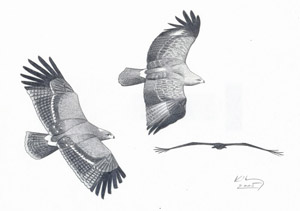
The method of the field survey of the Lesser Spotted Eagle included inspection of the squares favourable for nesting, which were mainly presented by hunting grounds. Observation points with a wide view were identified in each square. Team members worked at each observation point for at least 2-3 hours during the most convenient time (from 8:00 to 18:00) using binoculars and telescopes. In the evening, information from all observation points was put on a general map and in the field book. Simultaneously, the counting of other birds of prey and rare birds was conducted. Furthermore, the counting was conducted on the route when travelling from one site to another, and thus providing complementary data. Totally, during 20 days, the field team has conducted observations on about 200 points, 89 of which were mapped with the GPS system.
During the survey, the field team managed to visit 141 squares and fully inspected 67 of them, which is much more than it was planned. The field team also visited the valleys of all medium and large rivers and even surveyed some forest squares and meadows. This all was achieved partly due to the extended period of good weather (which is not common for Carpathians) and reliable cars. Besides, the field team managed to cover with the survey all habitats useful for nesting, where it recorded 63 territorial pairs and 87 prospective nesting sites. 14 more pairs were recorded outside the mountain area and 2 pairs – in Romania on the border. Nest search was outside the project objectives and was not conducted for the sake of saving time, though sometimes the field team observed birds flying to nests
Terminology
For the purposes of the project, a hunting male or a pair in a suitable habitat, which was observed during calling at a lack or flying with food, is referred to as a nesting pair.
An area with various open habitats and adjoining sites of the old forest, which is optimal for one Lesser Spotted Eagle pair and has similar conditions to those of the areas used by the neighboring pairs, is referred to as a probable or prospective nesting area.
Results
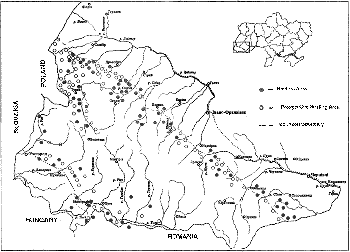
It was discovered during the project implementation that the Lesser Spotted Eagle is generally a common bird species in Ukrainian Carpathians. However, its distribution is not homogeneous, and it is completely absent in some areas (see map). This species nests almost everywhere in foothills, but up to a certain height above the sea level (mainly up to 600 m , and rarely up to 800 m above the sea level). An important habitat requirement is presence of open areas needed for hunting; the species is mainly found in the hayfields, meadows with drainage channels and pastures. Another habitat requirement is neighboring with areas of old forest (both deciduous and coniferous).
Both habitat requirements are very often met in foothills (both in Ciscarpathian and Transcarpathian regions) and in East Beskydy; they are rarely met in the valleys of large rivers within the limits of mountain ranges. In such areas, the Lesser Spotted Eagle nests everywhere with a relatively high density. Sometimes it was possible to observe up to 3-4 pairs of hunting birds within one observation point (Skolevskyy, ?urkovskyy and ?amborskyy rayons of Lvivska oblast, and Dolynskyy rayon of Ivano-Frankivska oblast).
| Surveyed Region | Route | Number of days | Number of prospective nesting sites found | Number of Lesser Spotted Eagle counted, nesting pairs | Total population estimations, nesting pairs |
| Zakarpatska oblast (Transcarpathian region) | Pakhovskyy mountains; ranges of Svydovets and Chernogora in polonines, valleys of White and Black Tisa, Verkhnetysenska hollow, left bank of Tisa river (Volcanic range), valley of river Uzh and its tributary Tur’ya, Polonynskyy and Verkhovynskyy mountain ranges, Zakarpatska lowland | 9 | 19 | 17 | 30-35 |
| Lvivska oblast (Lviv region) | East Beskydy ranges, including riverheads of Dnistr and Stryy | 5 | 44 | 33 | 70-75 |
| Ivano-Frankivska oblast (Ivano-Frankivsk region) | Verkhovynsyy and Kosivskyy rayons; valleys of rivers Prut, Cheremosh, Svycha, Chechva | 4 | 15 | 28 | 30-35 |
| Chernovytska oblast (Chernovtsy region) | south-eastern part of Pokutsko-Bukovina Carpathian mountains | 2 | 9 | 1 | 5 |
| TOTAL | 20 | 87 | 79 (63 – within mountains) | 140-150 |



